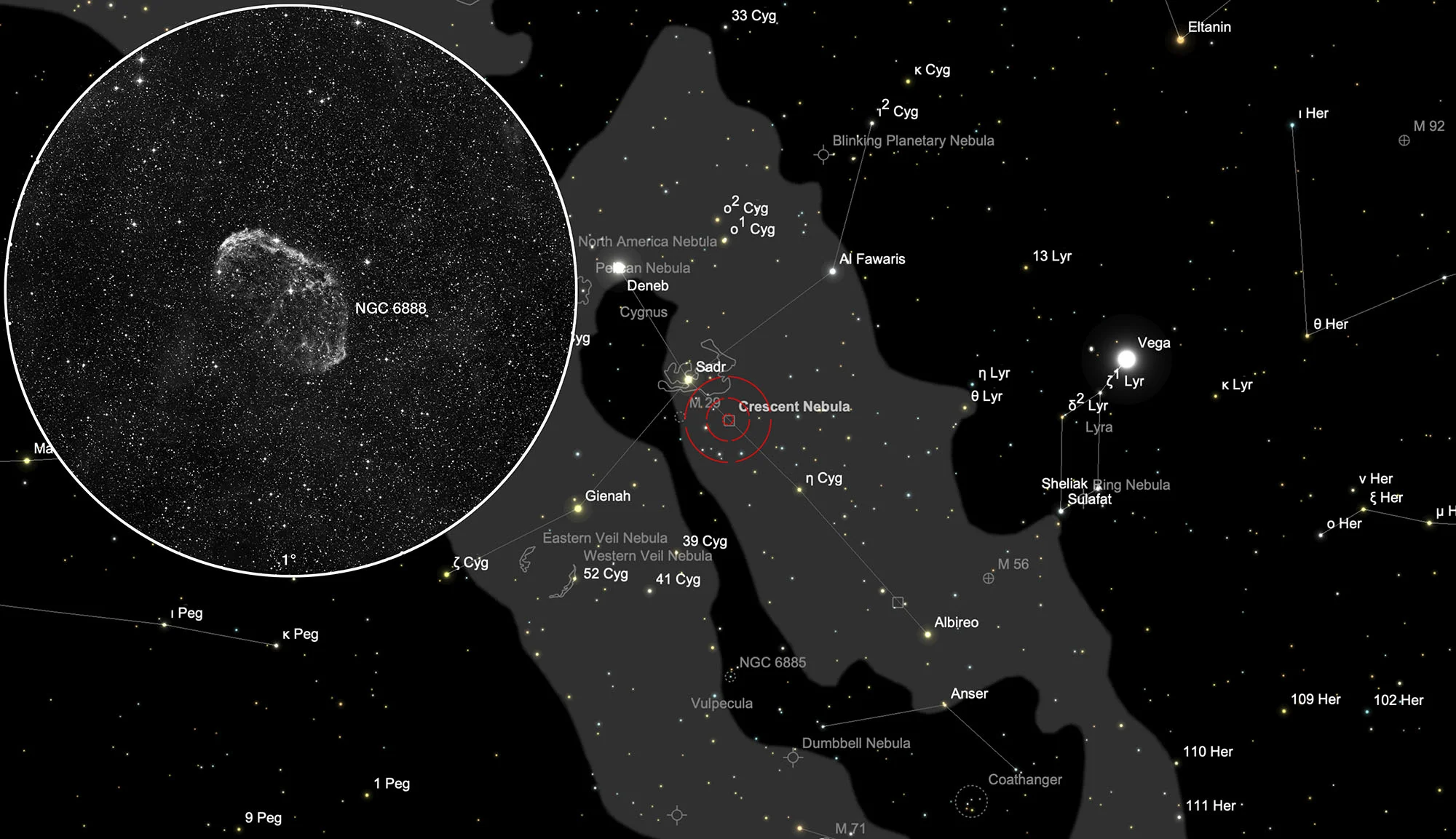Crescent Nebula (NGC 6888) & Soap Bubble Nebula (Ju 1)
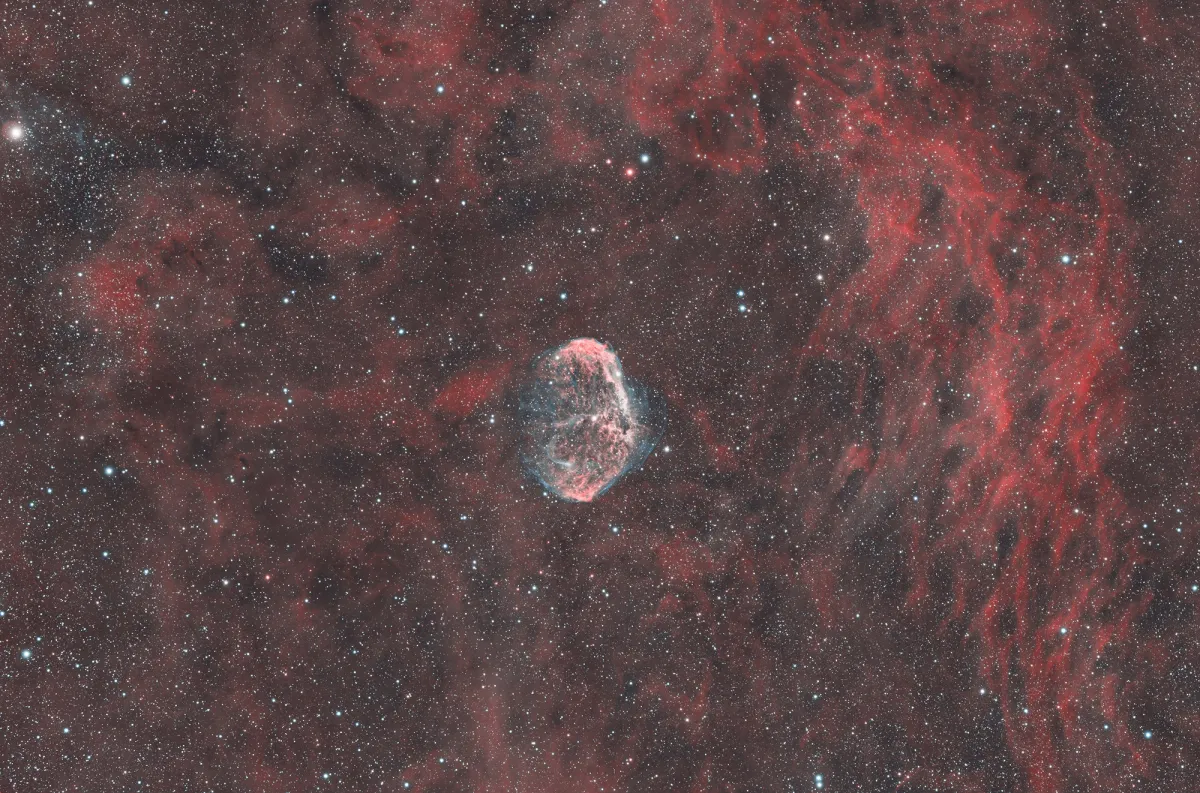

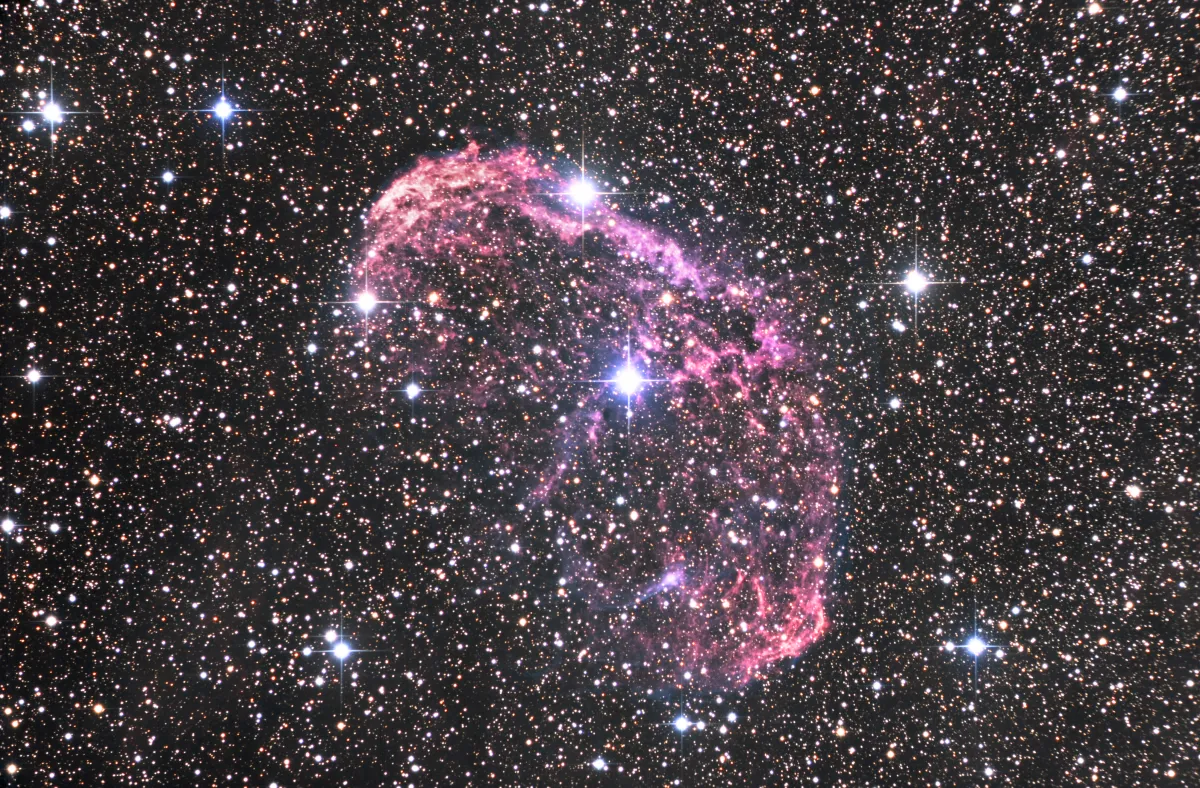
Crescent Nebula (NGC 6888)
The emission nebula NGC 6888 is somewhat similar in appearance to the Cirrus Nebula, but it is not a supernova remnant. NGC 6888 belongs to the class of Wolf-Rayet Nebulae, a nebula caused by a star of the same name. Incidentally, this specimen is one of the brightest W-R nebulae.
W-R stars are massive and luminous and probably evolved from the also very luminous O stars. There are two groups of W-R stars: those dominated by nitrogen lines (W-N stars) in their spectra and those dominated by carbon lines (W-C stars) in their spectra. Another feature of W-R stars is their extremely strong stellar winds. The matter they blow off into space is made to glow by their high-energy light and in some cases appears to us as emission nebulae.
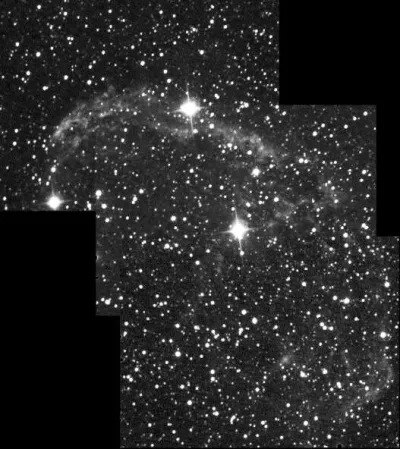
The central star of NGC 6888 is designated HD 192163, a prototype of the W-N6 stars with a very high effective temperature of 55'000 Kelvin. For this reason, its light contains a lot of high-energy UV and can therefore excite doubly ionized oxygen [OIII] very strongly. Although the oxygen in NGC 6888 is underabundant by a factor of four compared to the element abundances of the Sun and the interstellar gas, the emission lines of doubly ionized oxygen are very intense.
Long thought to be a supernova remnant because of NGC 6888's filamentous appearance and unusual spectral features, it was found to be a Wolf-Rayet star rather than a post-supernova (pulsar) at its centre.
NGC 6888 appears in long exposure photographs as a closed nebula bubble amidst the nebulae of Sharpless 108, south of gamma Cygni. Since a bright filament at the northern edge of this bubble is visually striking, NGC 6888 was given the nickname Crescent Nebula, which may mean either a crescent moon or a semi-circular breakfast pastry. [72]
| Designation | NGC 6888 |
| Type | EN |
| Right Ascension (J2000.0) | 20h 12m 06.5s |
| Declination (J2000.0) | +38° 21' 18" |
| Diameter | 18 × 13 arcmin |
| Photographic (blue) magnitude | 10.0 mag |
| Metric Distance | 1.450 kpc |
| Dreyer Description | F, vL, vmE, ** att |
| Identification, Remarks | WH IV 72; GC 4561; LBN 203; Sh2-105; Crescent nebula |
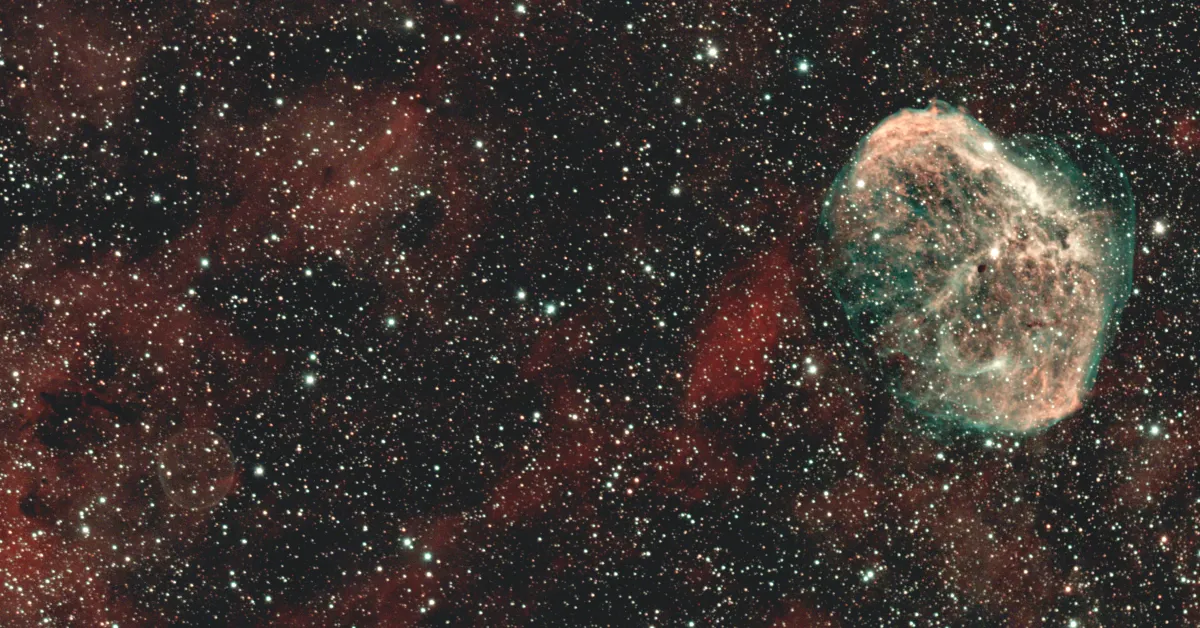
Soap Bubble Nebula (Ju 1)
This very faint planetary nebula (PN G75.5+1.7) was discovered by amateur astronomer D. M. Jurasevich on images taken on 19 June 2007 and 6th July 2008 using an Astro-Physics 160EDF apochromatic refractor at Mount Wilson Observatory. The nebula was independently noted and reported by K. B. Quattrocchi and M. Helm. They took eight separate 10-min images on 17th July 2008 with a 40.6 cm f/3.75 astrograph, located at the Sierra Remote Observatories in the Sierra Nevada Mountains.
The images revealed a near-spherical shell of gas, located within a faint H II region near NGC 6888, that was apparently not noticed (or published) previously due to the density of stars and gas in that area of Cygnus. This shell appears as a slightly elongated ellipse with its major axis at position angle 5° and having an apparent size of 260 x 235 arc seconds. [512]
How to find the Crescent?
NGC 6888 is located in the constellation Cygnus between the stars Sadr (γ Cygni) and η Cygni. It is advantageous to choose an eyepiece with a large field of view. An O-III filter is required if the sky is not completely dark. Then the telescope is aligned with the help of the Telrad finder according to the adjacent map. The nebula lies at a prominent "W" of five brighter 7th to 8th magnitude stars. On 24 July it is in opposition to the Sun and crosses the meridian at local midnight. The constellation is best visible in the months of March to December.
Visual Observation
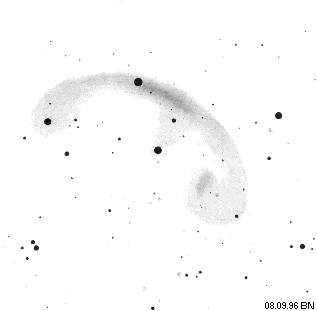
300 mm Aperture: With a moderately dark sky without an O-III filter, the northern, brightest area of NGC 6888 can only be seen, since the nebula then does not appear much brighter than the sky background. With a filter, he then reveals his crescent shape. The nebula appears fainter than the well-known Cirrus Nebula in the same constellation. On a dark, clear night in the mountains, far from civilization and light pollution, NGC 6888 is easy to see even without a filter. — 300 mm f/4 Popp Newton, Raten, 1996, Philipp Reza Heck
400 mm Aperture: In the 21 mm Tele Vue Ethos eyepiece, the nebula is clearly visible with an O-III filter. Its semi-circular shape is distinct. It resembles more a Prussian biscuit than a croissant. — 400 mm f/4.5 Taurus Dobsonian, Glaubenberg, SQM 21.0, 11. 10. 2023, Bernd Nies
